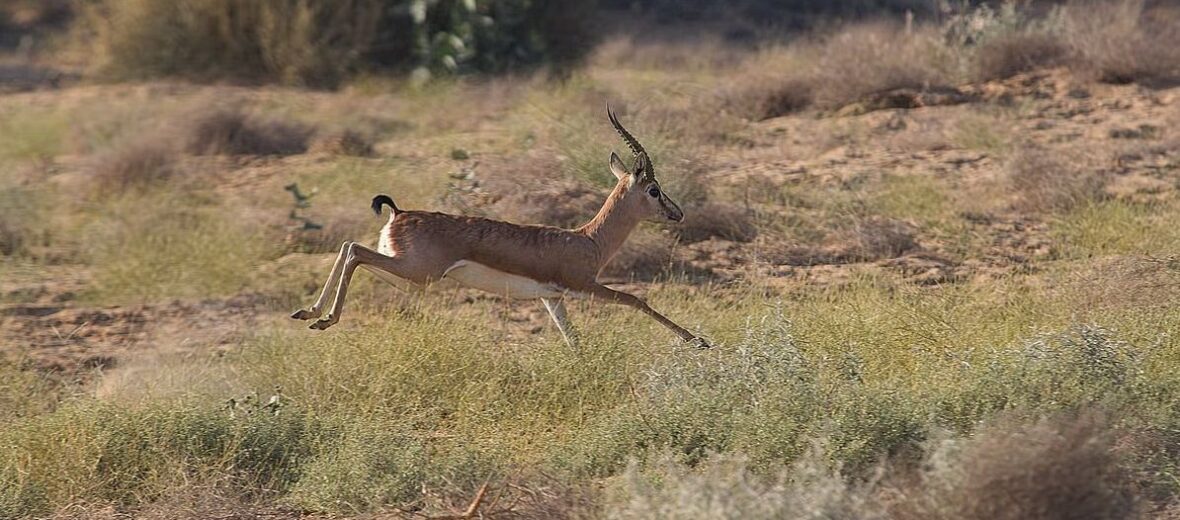
The chinkara, aka Indian gazelle, can be found in Afghanistan, Iran, Pakistan, and of course India. They prefer deserts, dry scrub, arid plains, arid hills, and light forest environments. With an estimated 70,000 wild individuals, these critters are listed as Least Concern by the IUCN. But due to habitat destruction, hunting, and trapping, their numbers are decreasing.
First the Stats…
Scientific name: Gazella bennettii
Weight: Up to 51 lbs.
Length: Up to 2.1 feet
Height: Up to 3 feet
Lifespan: Up to 15 years
Now on to the Facts!
1.) Chinkaras are typically shy and solitary but can be spotted in small groups of up to 4 individuals.
2.) They are nocturnal (active at night) with some crepuscular (active at dawn and dusk) activity.
3.) These gazelles are herbivores (eat plant matter) that are also considered folivores (eat leaves) and frugivores (eat fruit). They graze on grasses, various leaves, and fruits (like pumpkin and melon).
4.) While the chinkara do drink standing water, they get a majority of their moisture from the foods they eat. So they can go for months at a time without drinking water.
5.) Chinkaras are presumed to be polygynous (males mate with multiple females) due to the aggression documented twice a year before breeding.
But wait, there’s more on the chinkara!
6.) Females birth a single calf after up to a 5.5 month gestation (pregnancy).
7.) Calves are born predominantly precocial (fully developed and nearly able to sustain themselves).
Did you know…?
When chased, these tiny gazelles can leap up to 21 feet in order to avoid predation.
8.) Calves will nurse from mom for about 2 months.
9.) A male is called a bull, a female is called a cow, and the young are called a calf or a fawn.
10.) These diminutive critters can be found at altitudes of up to 4,900 feet.
Now a Short Chinkara Video!
Be sure to share & comment below! Also, check out the Critter Science YouTube channel. Videos added frequently!
Want to suggest a critter for me to write about? Let me know here.



